Slow Cooker Chicken Breast
Chicken Breast and Potatoes in a Slow Cooker: Low-Calorie Recipe with Step-by-Step Instructions

Chicken breast and potatoes is one of those combinations that feels instantly comforting and familiar. In a slow cooker, the ingredients have time to infuse one another with flavor while maintaining their identity. And as a chef, I’ve found it’s one of the best ways to produce a wholesome, filling meal without excessive calories, butter, or oil. If you’re just starting out with slow cooking—or you’re looking for a low-effort, low-calorie meal that doesn’t taste like diet food—this is your recipe. It’s balanced, budget-friendly, highly customizable, and perfect for prep ahead meals.
- Ingredients and Equipment: Start Simple, End Delicious
- How to Prep Chicken and Potatoes for Ideal Texture and Taste
- Step-by-Step Slow Cooker Method: Gentle Heat, Deep Flavor
- Time and Temperature Table for Consistent Results
- Nutrition Breakdown: A Clean-Eating Classic
- Microwave Method: Speedy but Limited
- Pressure Cooker / Instant Pot Version
- Stove-Top Skillet or Dutch Oven Approach
- Oven-Baked Adaptation: For Roasted Flavor Lovers
- Avoiding Common Mistakes: Lessons from My Kitchen
- Sauce Ideas That Stay Light but Taste Rich
- Seasoning Strategies for Maximum Impact with Minimal Calories
- Variations I Recommend from My Experience
- Storage and Reheating: Keeping It Delicious for Days
- How to Turn This Simple Meal Into a Complete Plate
- FAQ: 15 Chef-Backed Questions and Answers About Chicken Breast and Potatoes in a Slow Cooker

Ingredients and Equipment: Start Simple, End Delicious
This dish doesn’t require fancy ingredients or specialized tools. I prefer using skinless, boneless chicken breasts because they’re lean, high in protein, and cook beautifully over low heat when paired with enough moisture. Potatoes—Yukon Golds or red potatoes—hold their texture best in a slow cooker.
The aromatics are what make this dish sing. A mix of garlic, onion, a bit of olive oil, dried herbs like thyme and rosemary, and a splash of low-sodium chicken broth form a base that’s light but deeply flavorful.
For tools, all you really need is a slow cooker (I use a 6-quart model for 4 servings), a sharp knife for prep, and optionally a meat thermometer to check doneness. This is a true one-pot dish, and that’s part of its beauty.
How to Prep Chicken and Potatoes for Ideal Texture and Taste
Over the years, I’ve learned that size and shape matter. I always cut the potatoes into uniform chunks—about 1½-inch pieces. This helps them cook evenly and avoid turning mushy. I never peel them unless the skins are very tough. The skin adds fiber and a rustic feel I personally enjoy.
Chicken breasts, on the other hand, are best left whole or halved depending on thickness. I season them generously with salt, pepper, garlic powder, and herbs, then let them sit while I prep the rest. This quick dry-brine gives better flavor penetration, even in a slow cook environment.
To build the dish, I layer potatoes on the bottom, season them lightly, then rest the chicken breasts on top. This keeps the meat elevated slightly and helps it steam gently rather than stew aggressively in the broth.
Step-by-Step Slow Cooker Method: Gentle Heat, Deep Flavor
Once everything is assembled in the slow cooker, I add a modest amount of broth—just enough to cover the bottom third of the ingredients. You don’t want to drown the dish; the chicken and potatoes will release moisture as they cook, creating their own light, flavorful jus.
I cover the cooker and set it to Low for 5–6 hours or High for 2.5–3 hours. I don’t stir during cooking; slow cooking is about trust. Opening the lid releases heat and slows cooking.
Near the end of cooking, I check the chicken with a thermometer—165°F (74°C) is the goal. I often let the dish rest for 10–15 minutes afterward with the lid off. This helps everything settle, and the broth thickens slightly as the starch from the potatoes finishes hydrating the liquid.

Time and Temperature Table for Consistent Results
| Cooking Mode | Temperature (Approx) | Time Range | Notes from My Kitchen |
| Slow Cooker – Low | ~190°F / 88°C | 5–6 hours | Best for tenderness and flavor infusion |
| Slow Cooker – High | ~300°F / 149°C | 2.5–3 hours | Faster, still good but watch moisture |
| Resting After Cook | Room Temp | 10–15 minutes | Helps juices settle, improves texture |
Nutrition Breakdown: A Clean-Eating Classic
Per serving (1 chicken breast + 1.5 cups potatoes):
- Calories: ~310 kcal
- Protein: ~33g
- Carbohydrates: ~26g
- Fat: ~7g
- Fiber: ~3g
- Sodium: ~420mg
Because the dish uses broth instead of cream, butter, or cheese, the calories stay modest. But trust me—when properly seasoned and slow-cooked, it still tastes indulgent. For added nutrients, you can toss in carrots, celery, or green beans during the last hour.
Microwave Method: Speedy but Limited
If you’re in a pinch, I’ve made a microwave version using pre-cooked or diced chicken. I par-cook potato chunks in a covered microwave-safe bowl with a splash of broth for 5–6 minutes. Then I stir in chopped, seasoned chicken, cover again, and microwave on Medium for another 4–5 minutes.
It’s edible and works in emergencies, but it lacks the depth of flavor and tender texture of the slow cooker version. I always tell clients—this is for when you need food fast, not when you want it at its best.
Pressure Cooker / Instant Pot Version
For the Instant Pot, I place the potatoes on the bottom with ¾ cup broth and seasonings, then place seasoned chicken breasts on top. I cook on High Pressure for 9 minutes, followed by a 5-minute natural release, then quick release the rest.
Once the lid is open, I let it rest for another 5 minutes before slicing. This method is excellent for meal prep and keeps the texture surprisingly close to slow cooking. I use it all the time for weeknight dinners.
Stove-Top Skillet or Dutch Oven Approach
If you don’t own a slow cooker, a Dutch oven on the stove works well. I brown the chicken lightly first in olive oil, then remove it and sauté garlic and onions. I layer potatoes next, then nestle the chicken back on top, add broth, cover, and simmer over low heat for about 45–50 minutes.
Stirring occasionally is fine here, but I still recommend a gentle touch. This method gives a bit more caramelization, which adds flavor but also demands more attention.
Oven-Baked Adaptation: For Roasted Flavor Lovers
Sometimes I crave the roasted textures a slow cooker can’t deliver. In that case, I use a covered casserole dish or Dutch oven and bake everything together at 375°F (190°C) for 45–60 minutes.
The potatoes brown a little at the edges and the chicken gets a soft crust. I recommend basting once with pan juices halfway through. It’s not quite as moist as the slow cooker version but makes up for it with roasted aroma and flavor.

Avoiding Common Mistakes: Lessons from My Kitchen
One of the biggest mistakes I see is using too much liquid. Unlike soups or stews, this recipe doesn’t need a full cup of broth—just enough to prevent burning. Too much, and everything becomes soggy and flavorless.
Another misstep is overcooking. Chicken breast turns chalky if left too long on High. Always aim for 165°F and let it rest.
I’ve also seen people cut potatoes too small. That leads to disintegration. Uniform, larger pieces hold up better. And lastly—season everything. Underseasoned low-fat food is the reason many people give up on healthy recipes.
Sauce Ideas That Stay Light but Taste Rich
Since this dish is designed to be low-calorie, I use sauces that add flavor without fat. A simple lemon-herb vinaigrette (lemon juice, olive oil, garlic, thyme) drizzled on top adds brightness.
For something richer but still light, I blend Greek yogurt with Dijon, lemon juice, and chopped parsley—an herbed yogurt sauce that cools and contrasts the warm dish beautifully.
A mustard-based broth reduction is also fantastic: just simmer the leftover broth with a splash of white wine and whole grain mustard until it thickens. Spoon over the chicken and serve.
Seasoning Strategies for Maximum Impact with Minimal Calories
With fewer calories to work with, seasoning becomes everything. I build layers from the beginning. Salt and pepper are essential, but I also lean heavily on:
- Garlic and onion (fresh or powder)
- Dried rosemary, thyme, or Italian seasoning
- Smoked paprika or a touch of cayenne for warmth
- Lemon zest for brightness
I avoid heavy sauces but finish with fresh herbs or a tiny drizzle of quality olive oil to tie everything together. When you use these tools correctly, the result is a dish that tastes far more indulgent than it is.
Variations I Recommend from My Experience
Over the years, I’ve created dozens of twists on this core recipe. One of my go-to versions adds sliced carrots and a splash of white wine—more French countryside in style. Another time, I made it with sweet potatoes instead of white ones and added a pinch of cinnamon and cumin for a subtle Moroccan flavor.
For a Mediterranean spin, I add chopped olives, lemon slices, and fresh oregano near the end. And when I want it spicy, I throw in chili flakes and serve it with hot sauce or harissa.
The beauty is, the base of chicken and potatoes is neutral enough to carry almost any global flavor profile.

Storage and Reheating: Keeping It Delicious for Days
One of the reasons I come back to this dish—besides how easy and healthy it is—is how well it stores and reheats. In a professional setting or for meal prepping at home, I want to know my food won’t lose quality after a night (or several) in the fridge. With chicken breast and potatoes, technique is everything when it comes to leftovers.
First, I let the dish cool completely at room temperature before storing it. That’s non-negotiable. If you seal food while it’s still hot, steam condenses inside the container and the potatoes become waterlogged. I usually allow it to sit for 30 to 45 minutes, then portion into airtight containers.
When refrigerating, I separate the potatoes and chicken if possible. Potatoes tend to absorb more moisture, and keeping them apart helps them reheat with better texture. I also make sure to pour a bit of cooking liquid into each container—this acts like insurance for moistness, especially with lean chicken breast.
For reheating, I recommend using the stovetop or oven if you want to preserve the integrity of both ingredients. I reheat covered over low heat, adding a splash of broth or water and letting it warm gently for 10–12 minutes. The microwave is a viable option too, but I always cover the dish with a microwave-safe lid or a damp paper towel to prevent the chicken from drying out. I use medium power (50–70%) and heat in short 1-minute bursts, stirring the potatoes between rounds.
As for freezing—yes, you absolutely can. I often prepare an extra batch for future meals. I cool the food completely, then portion into freezer-safe containers or bags. The key is to freeze with sauce. Without that moisture buffer, the chicken can dry out during the thawing process. I’ve found that frozen meals retain the best texture when thawed slowly in the fridge overnight, then reheated as described.
With these steps, your leftovers won’t just be passable—they’ll feel like a fresh, nourishing meal all over again.
How to Turn This Simple Meal Into a Complete Plate
As chefs, we’re always asking ourselves: how do I take a familiar, homey dish and elevate it—without adding unnecessary complexity? Chicken breast and potatoes in the slow cooker is humble by nature, but I’ve learned that thoughtful additions and presentation can make it feel like something special.
For me, a “complete plate” is about balance—not just nutrition, but flavor, color, and texture. The chicken brings protein, the potatoes bring carbs and comfort. What’s often missing is acid, color, and crunch. To fix that, I typically add a fresh green vegetable or side salad.
One of my favorite pairings is steamed green beans tossed in lemon zest and a touch of olive oil. Their brightness contrasts beautifully with the earthiness of the potatoes. Another option is sautéed spinach with garlic and a pinch of red pepper flakes—minimal effort, maximum impact. On warmer days, I go for a simple arugula salad dressed in lemon juice and a shaving of Parmesan. It’s clean and peppery, and it makes the plate pop visually.
I also think about sauce. A drizzle of herbed yogurt or a mustard vinaigrette over the chicken adds brightness and moisture, while keeping the dish light. I use sauces as finishers—just enough to lift the dish, not drown it.
And finally—presentation. Even for myself, I slice the chicken breast on a bias, fan it over a bed of potatoes, spoon a bit of broth on the side, and garnish with a few fresh herbs or chili flakes. These little touches make a dish feel considered, which is half the pleasure of eating it.
In short, the slow cooker does the hard work, but you bring the finesse. That’s where good food becomes great food.
FAQ: 15 Chef-Backed Questions and Answers About Chicken Breast and Potatoes in a Slow Cooker
Can I use frozen chicken breasts in the slow cooker?
I’ve tried this when in a rush, but it’s not ideal. The slow cooker heats gradually, and frozen meat takes too long to reach a safe temperature, which can allow harmful bacteria to grow. I recommend thawing the chicken in the refrigerator overnight before cooking. It cooks more evenly and stays juicier that way.
What type of potatoes hold up best in the slow cooker?
In my experience, Yukon Golds and red potatoes are the most reliable. They hold their shape, maintain a creamy interior, and don’t turn to mush—even after hours in the cooker. Russets break down too easily and can give the dish a mealy texture.
Do I need to sear the chicken first?
You don’t have to, and most days I don’t. But I’ve tested both methods, and searing does add extra flavor from browning. When I have a few extra minutes, I quickly pan-sear the breasts before placing them in the cooker. It’s a small step with big impact.
How can I prevent dry chicken breast?
This is a big one. I always use a meat thermometer to ensure I don’t overcook the chicken. Once it hits 165°F (74°C), I turn off the heat and let it rest in the cooker for 10–15 minutes. The resting stage is crucial—it lets the juices redistribute and the texture become silkier.
Is it okay to cook on High instead of Low?
Yes, but with caution. I often use High when I’m pressed for time, but I check the chicken after 2.5 hours max. Chicken breast is lean and can dry out quickly if left too long. I recommend adding a bit of extra broth if cooking on High, as moisture evaporates faster.
Can I add vegetables like carrots or broccoli?
Definitely. I often add carrots with the potatoes—they cook at a similar rate and add sweetness. For broccoli, I recommend adding it during the last 30 minutes of cooking or steaming it separately. Overcooked broccoli becomes mushy and loses color.
Can I meal prep this dish for the week?
Absolutely. I do it often. The chicken and potatoes hold up very well in the fridge for up to 4 days. I portion them into containers with a bit of cooking liquid. When reheating, I use the microwave on medium power or reheat gently on the stovetop with a splash of broth.
What seasoning works best for maximum flavor with minimum calories?
On my own low-calorie cooking days, I lean heavily on garlic, onion powder, rosemary, thyme, paprika, lemon zest, and black pepper. These aromatics pack flavor without needing oil, cheese, or butter. A little mustard or vinegar goes a long way too.
How do I make this dish look more appealing?
Presentation matters, even at home. I slice the chicken on a diagonal, stack it slightly over the potatoes, spoon a little sauce or jus over it, and finish with chopped parsley or chili flakes. It only takes 30 seconds and makes it feel like a restaurant meal.
Can I use chicken thighs instead of breasts?
I’ve done it many times. Thighs are more forgiving—they stay moist even if slightly overcooked. They do have more fat, so if you’re watching calories, just account for that. But flavor-wise, they’re rich and satisfying.
What if the potatoes are undercooked?
It’s happened to me when I cut them too large or didn’t add enough broth. I just switch the cooker to High, add a splash more liquid, and cook for another 30 minutes. It always does the trick.
How do I thicken the sauce without cream or butter?
I often reduce the cooking liquid in a small saucepan until it naturally thickens. Alternatively, I use a cornstarch slurry (1 tsp cornstarch + 1 tbsp cold water), stirred in during the final 30 minutes of cooking. It creates a silky broth without added calories.
Can I freeze this meal?
Yes. I freeze individual portions in meal-prep containers with a bit of sauce to keep everything moist. I always thaw overnight in the fridge before reheating gently. The texture holds up great, especially if you didn’t overcook the potatoes in the first place.
What are some flavor variations you’ve enjoyed?
One of my favorites adds cumin, paprika, and lemon for a Spanish vibe. I’ve also tried adding olives, capers, and oregano for a Mediterranean version. You can use curry powder and coconut milk for a mild Indian twist—versatility is this dish’s superpower.
Can I add a creamy element without adding a ton of calories?
Yes, and I often do. I whisk a spoonful of Greek yogurt with lemon juice, Dijon mustard, and chopped herbs, then drizzle it over the chicken before serving. It adds tang, richness, and color—all with under 50 calories.
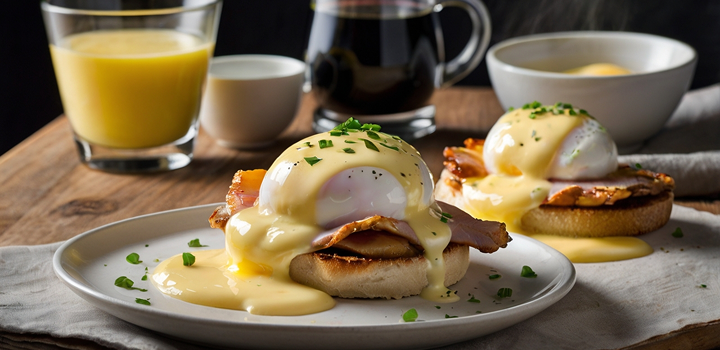
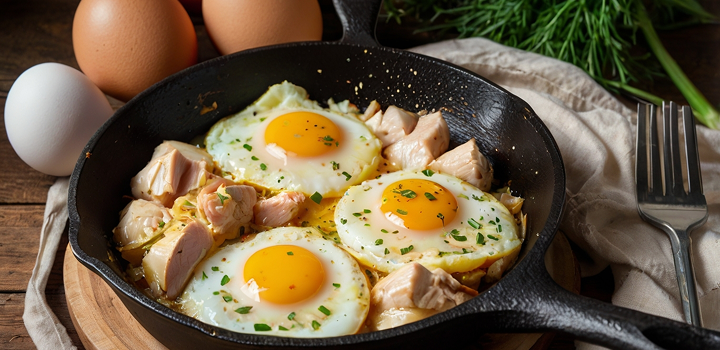
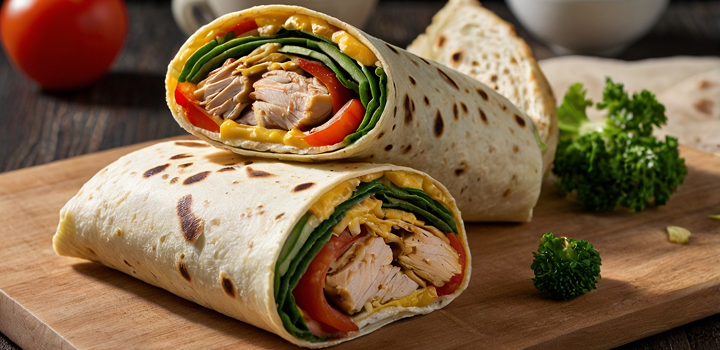
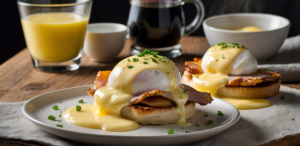
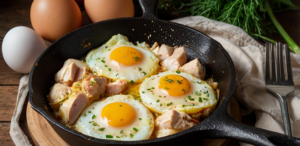

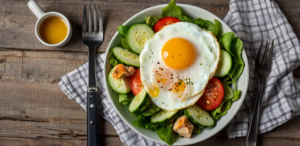
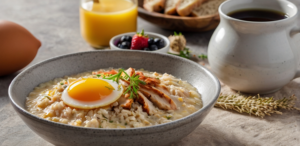
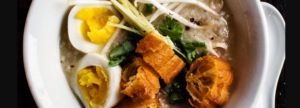

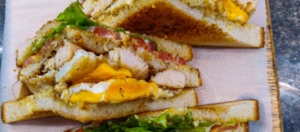
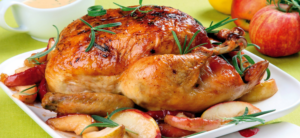

Post Comment